Once widely maligned as “Tupperware,” the polymer pistol now rules the shooting world to the point where the writer of this article, who is also a very active trainer and LTC instructor, has many students say they’ve never shot an all-metal handgun. And some are also not personally familiar with the revolver, regardless of composition. So, our Houston testers wondered if the 38 Special wheelgun is practically dead, or can it still serve a useful purpose as a viable every-day carry handgun when so many good semi-automatic 9mm pistols exist.
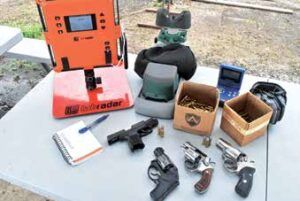
To find out, we chose the SIG Sauer P365, perhaps the hottest-selling handgun in this country, as a benchmark against which to compare some new and not-so-new revolvers. The baseline we tested against was a SIG P365 365-9-BXR3 9mm Luger, $599. As a value proposition, we started off the revolver part of the tests with an older S&W Model 60 38 Special, $459. The closest modern equivalent of the 1978-version Model 60 is a blued Model 36 150184 38 Special, $809. Next, we included a Ruger LCR 5401 38 Special +P, $699. Last was a Ruger SP101 5737 38 Special, $859. Someday, the ammo drought will end, but because we’re not there yet we once again used properly assembled reloads for the revolvers. We tried to get a little extra speed with those short barrels, so we used 125-grain bullets. The first we tried was Hunter’s Supply hard-cast lead flat point from MidwayUSA.com (418579, $15/100). We also shot Hornady’s 125-grain XTP (490514, $24/100). For the SIG P365 9mm, we used SIG Sauer’s 115-grain V-Crown (MidwayUSA.com 966280, $22.50/20) and 9mm Remington Range ammo (542116, $30/50).
Keeping in the mind the assumed use of these handguns was for self defense, accuracy testing was done at 7 yards. Even though two of the three revolvers allowed single-action shooting, all testing for accuracy and speed was performed double action only. Group shooting consisted of multiple five-shot strings fired from a well-weighted Caldwell Pistolero shooting rest (MidwayUSA.com 562771, $30). Muzzle velocities were obtained via a LabRadar chronograph. All shooting was done at American Shooting Centers in west Houston. Here’s how the handguns performed.
Gun Tests Grade: B-
$699
The Ruger LCR hit the market around 2010, and we were some of the early adopters. In the LCR, Ruger introduced a number of innovations we’d never seen on a wheelgun. For example, the S&W Model 60 is an old-style design, with a stainless-steel frame and a side plate that can be removed to access parts. The Ruger LCR has a monolithic frame made from aerospace-grade 7000-series aluminum. When you open the side plate on the S&W, lots of little pieces can be removed and sometimes even require specific tools to put them back in. The Ruger has a polymer fire-control unit that holds all of those small parts in the proper relationship to each other and reduces weight. Like the S&W Model 60, the cylinder is stainless steel, though the Ruger is PVD coated. It is also radically fluted to reduce more weight.
| Action Type | Double action only |
| Overall Length | 6.5 in. |
| Overall Height | 4.5 in. |
| Maximum Width | 1.28 in. |
| Weight Unloaded | 0.82 lbs. |
| Weight Loaded | 0.96 lbs. |
| Cylinder | Stainless steel, PVD finish |
| Receiver Material | Polymer |
| Front Strap Height | 1.3 in. |
| Back Strap Height | 3.0 in. |
| Barrel Length | 1.875 in. |
| Grip Thickness (Maximum) | 1.13 in. |
| Grip Circumference | 4.5 in. |
| Cylinder Capacity | 5 rounds |
| Front Sight | XS large dot with tritium insert |
| Rear Sight | Groove in top strap |
| Sight Radius | 3.1 in. |
| Trigger Pull Weight (Double Action) | 9.5 lbs. |
| Trigger Span | 3.0 in. |
| Safety | Rebounding hammer |
| Warranty | Limited |
| Telephone | (336) 949-5200 |
| Made In | USA, NH |
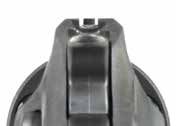
Ruger engineered a patented friction-reducing cam that produces a very smooth non-stacking trigger, so the effort required to move the trigger further to the rear doesn’t noticeably increase as trigger compression continues. It beats the unmodified trigger of the Model 60 hands down.
Also, our particular model of the LCR has an upgrade to the front sight and the grip. The standard front sight has been changed to an XS large dot. This has a larger-than-standard white circle surrounding a tritium insert, making it easy to see in normal or low-light conditions. The rear sight is the expected groove in the top strap of the receiver. The grips have a padded gel piece in the backstrap, thus cushioning the shooting hand just a bit more.
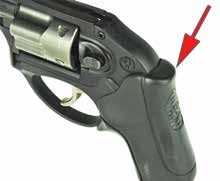
The LCR is not a hammerless revolver, though it looks like it. The hammer is actually contained within the shroud. The shooter does not see or manipulate it, making this a true Double-Action-Only (DAO) revolver. That also means there isn’t any hammer spur to foul in the pocket with the draw. The cylinder release, as is normal for Ruger, is a button on the left side of the frame that pushes inward, allowing the cylinder to rotate out to the left. The extractor rod isn’t any longer than on the S&W (there just isn’t more room on the design), and the same care must be exercised when extracting empties.
Accuracy was fair, averaging 2.36-inch groups, which was a good bit larger than the S&W or the SP101. Reliability was perfect. The sights are better than we frequently see on a small revolver, though they shot slightly high and left. The trigger is a real improvement over the S&W.
Our Team Said: The Ruger LCR is lighter than we prefer. If all you are going to do is carry it — no big deal. But this little gun requires practice to shoot well, and the recoil goes with that. Ruger designed a new cam system for the trigger on the LCR, producing one of the best factory triggers we have seen in a standard-production revolver.
Bottom Line
In our tests, the SIG Sauer P365 shot more quickly, was a bit easier to shoot accurately, recoiled a bit less, concealed more easily, and carried a higher round count of somewhat more powerful ammunition. It would appear that we have destroyed our own argument about the viability of the snub-nosed revolver in the modern shooting world, except in the areas of dependability and simplicity of deployment. We believe those are important considerations. To wit:
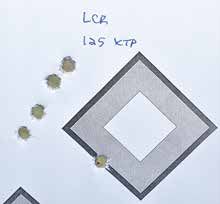
Semi-automatic pistols are more likely to malfunction than revolvers. Making sure your Pocket 9 is well-maintained will mitigate a large percentage of potential problems. If it does jam, a little bit of training and a solid “Slap, Rack, Bang” will fix most of the things that can go wrong. With the revolver, however, simply pull the trigger again.
Semi-autos can be more sensitive to ammunition selection and fundamentals of grip and stance. Don’t lock the arms out, and the auto can malfunction. Feed it the wrong ammo, and it can malfunction. The revolver doesn’t care if you put five different kinds of old ammo in there. If it doesn’t work, press the trigger again. We have done many demos where we held the revolver upside down and activated the trigger with our little finger. We are less likely to be accurate, of course, but the revolver didn’t care.
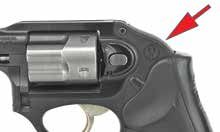
Many law-enforcement officers carry a small revolver in an ankle holster. Yeah, ankle holsters are itchy and uncomfortable when you first wear them, but so are inside-the-waistband holsters. That ankle holster leaves the backup gun down close to the dirt. Do an informal survey sometime and ask police officers whether they are willing to trust their lives to a semi-auto or a revolver that is likely to get dirty. A quick note on the ankle holster for the average citizen — they work very well for someone who drives a lot. Puts that handgun in an accessible location.
Those with less-than-optimal hand strength may find the semi-auto slide hard to rack and the manual of arms more difficult to perform. The operating procedures on the revolver are simple and few — open the cylinder, load the cylinder, close the cylinder, press trigger. We readily acknowledge that those with diminished hand strength might also find issue with the longer, and frequently heavier, trigger pull required from the revolver.
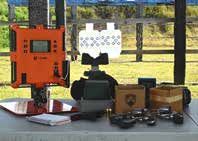
What if you have the semi-auto in a purse or coat pocket with an absolute need to shoot and no time to draw? Press the trigger. In all likelihood, you will get one shot off before the slide fouls in the pocket and the gun malfunctions. The revolver doesn’t care. Press the trigger again as necessary.
If, heaven forbid, a good guy or gal has to defend themselves at contact distance, pushing the muzzle of a semi-auto into the attacker will force the slide to the rear, rendering the pistol inoperable until that condition is remedied. The revolver doesn’t care. Press the trigger again as necessary.
Is the small revolver the perfect everyday carry gun? No. The snubnosed 38 Special is a tool, a specialized tool, that does some jobs better than just about any other choice. Several of our test group carry Pocket Nines on a daily basis, especially during the summer in Houston. We have no intention of giving them up. But when it gets cold, we carry a 38 Special in a coat pocket because we don’t have time to dig through the other layers to get to the pistol on our belt.
When we carry a second handgun, we carry a 38 Special. When we drive a lot, we carry a 38 Special. We know tons of ladies who carry them in their purses and quite a few other folks that carry a 38 Special off body in a briefcase. We have no intention of trading in our snubbies, but we do realize their increasingly specialized role in concealed carry.
Drill Data (5x9x7)
| Pistol | Time to First Shot (seconds) | Split Average (seconds) | Total Time (seconds) |
|---|---|---|---|
| SIG Sauer P365 9mm Luger | 0.83 | 0.21 | 1.68 |
| S&W Model 60 38 Special | 0.9 | 0.28 | 2.03 |
| Ruger LCR 38 Special | 0.87 | 0.27 | 1.94 |
| Ruger SP101 38 Special | 0.87 | 0.28 | 1.98 |
38 Special Range Data
| Hunter’s Supply 125-grain Lead | S&W Model 60 | Ruger LCR | Ruger SP101 |
| Average Velocity | 792 fps | 790 fps | 820 fps |
| Muzzle Energy | 174 ft.-lbs. | 173 ft.-lbs. | 187 ft.-lbs. |
| Best Group | 1.32 in. | 1.79 in. | 1.38 in. |
| Average Group | 1.62 in. | 2.39 in. | 1.69 in. |
| Hornady 125-grain XTP | S&W Model 60 | Ruger LCR | Ruger SP101 |
| Average Velocity | 827 fps | 842 fps | 863 fps |
| Muzzle Energy | 190 ft.-lbs. | 197 ft.-lbs. | 207 ft.-lbs. |
| Best Group | 1.23 in. | 1.98 in. | 0.61 in. |
| Average Group | 1.34 in. | 2.33 in. | 1.16 in. |
Testing was done at American Shooting Centers in west Houston. Muzzle velocities were determined via a LabRadar chronograph ($559). All shots for group were fired double action from a well-sandbagged Caldwell Pistol Rest from MidwayUSA and aided by a mini-DRC Fortune Cookie bag from Wiebad.com.




























I just could not bring myself to buy a revolver without a hammer. “Ouuu. the hammer will snag on my cashmere sweater!!” Buy yourself a shoulder holster, bunky. Stop listening to sales ads and magazine articles. Buy what you think you want or need. You know you can feel what’s right in your guts. And who is the genius who has switch from ounces to . pounds? Neither indicates progress my friend.
Since 1981, I have periodically carried and fired a ‘K’ frame 2″ S&W Model 64-2 DAO .38 Special. Yes, I also carry a Para – Ordnance P13.45 double-stack 1911. However, over the years, this six shot snubby has been carried in every style of holster imaginable. (And, I’ve got the bin full of holsters to prove it!) Early on, I test fired this DAO revolver from inside the right side pocket of a medium weight three-season coat that was being retired. Firing two quick shots, at a silhouette target three feet away, I scored two lower abdomen hits before drawing from the pocket and placing two more shots mid-sternum. While the bad guy was having a bad day, so was I. It only took a moment to notice the right pocket area of my old fleece lined nylon shell jacket was on fire, But, the handgun fired, and the hammer didn’t get hung up on the fleece pocket lining during firing or draw stroke. As 2″ barreled revolvers were not intended for long range, well aimed shots (except by Broderick Crawford in Highway Patrol), I never missed the hammer spur.